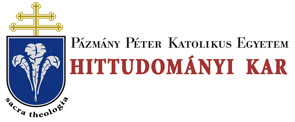Folia Theologica et Canonica 6. 28/20 (2017)
IUS CANONICUM - José Miguel Viejo-Ximénez, Raymond of Penyafort decretalist
124 JOSÉ MIGUEL VIEJO-X1MÉNEZ celona on August 7, 122020. When Raymund returned to his homeland is just as uncertain as when he professed into the Dominican Order: the date «anno Domini MCCXXII in die Parasceves» (Good Friday, April 1, 1222), given by the register of deaths of the Convent of Saint Catherine in Barcelona, has been debated, because Raymond did not sign as «Frater Raimundus de Pennaforti» before 122921. Owing to the silence of the sources, his condition of professor and canon of the cathedral chapter of Barcelona has also been questioned22. In Barcelona, Raymond kept working on the SIC until he was presented with a new challenge: Suero Gômez, former fellow of Saint Dominic (1170-1221) and first provincial prior of the Friars Preachers in Hispánia, asked him to collect cases of conscience in order to prepare a comprehensive and practical compendium that could help confessors administering the sacrament of penance23. Since constitution 21 of the Fourth Lateran Council had established that «all the faithful of both sexes shall, after having reached the age of discretion, faithfully confess all their sins at least once a year to their own (parish) priest (...)», this literary genre became an urgent need24. Raymond originally organized his Summa de casibus (SdC) into three books (particulae): crimes against God, crimes against neighbours and ministers25. Within each book, he followed the first three steps of the method that he had used to write the SIC: titles (rubricae: 16 in the first book, 8 in the second, and 34 in the third), subject matter of each title {materia), and questions and answers (quaestiones et solutiones earum). He composed the first version of the SdC while living in the Convent of Saint Catherine, Barcelona, sometime between 1222 and 1228. There are no traces of the use of Compilatio antiqua quinta (1226). Once again, Raymond had in mind the teachings of his Bolognese colleagues: besides the authors mentioned in the SIC, the opinions of Ruffinus and Melendus appear in the SdC. The relevant num20 Cf. Baucells I Reig, J., Documentation, num. 1. 21 Cf. Balme, F. - Paban, C. — Collomb, J. (ed.), Raymundiana, II, num. V. 22 Baucells i Reig, J., Documentation, 85-90 suggests this chronology: Raymond taught in Bologna until 1218-1219; he returned to Barcelona between the summer of 1219 and the summer of 1220; he entered into the Dominician Order between 1223-1225; his name did not appear in the documents preserved in the record of the cathedral chapter of Barcelona dating back to his period; the «Magister Raimundus canonicus barcinonensis» that appears in the sources is Raymond Vic, not Raymond of Penyafort. 23 Cf. the Vita antiqua in Balme, F. - Paban, C. - Collomb, J. (ed.), Raymundiana, I, num. XI. 24 On the origins of this literary genre cf. Kuttner, S., Repertorium, 208,241,412,430, 435, 443, 446. Goering, J., The Internal Forum and the Literature of Pennance and Confession, in Hartmann, W. - Pennington, K. (ed.), The History of Medieval Canon Law in the Classical Period, 379—428. Ferme, B., The momentum towards confessio oris: the background to Lateran TV, in Annaeus 1 (2010) 71-97. 25 Printed editions of SdC offer the second version: Rome 1600, 1603 (reprinted 1967) and 1619; Avignon 1715; Lyon 1718; Paris-Lyon 1720; and Verona 1744. A modern edition: Ochoa, X - Díez, A. (ed.), Summa depaenitentia (Universa Bibliotheca Iuris I-B), Roma 1976; but cf. García y García, A., ;Noesestol, 187-196.
